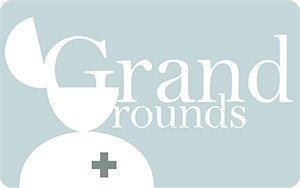Posts Tagged ‘standards’
Grand Rounds: Best of Health and Medical Blogging
Welcome to a new edition of Grand Rounds blog carnival, the weekly edition of what’s best in the health and medical blogosphere. This week, twenty four bloggers share data, insights, questions, reflections and more. Enjoy!
Read MoreThe Brain in Science Education: What Should Everyone Learn?
The neuroscience community has developed its own set of core concepts that K‑12 students and the general public should know about the brain and nervous system and has correlated those concepts to the national standards.
Read MorePooling data to accelerate Alzheimer’s research
Very interesting article in the New York Times on the reasons behind growing research of how to detect Alzheimer’s Disease: Rare Sharing of Data Leads to Progress on Alzheimer’s (New York Times) (Situation before) Scientists were looking for biomarkers, but they were not getting very far. “The problem in the field was that you had many different…
Read MorePABI Plan: Reinventing Brain Care Through Policy, Standards, Tech, Neuroinformatics
Today, in honor of both Brain Awareness Week (March 15–21) and Brain Injury Awareness Month (March), it is my pleasure to interview Patrick Donohue, founder of the Sarah Jane Brain Project, a foundation launched in 2007 with the explicit aim to create a model system for children suffering from all Pediatric Acquired Brain Injuries, and…
Read MoreArts and Smarts: Test Scores and Cognitive Development
This is an interesting article from Greater Good Magazine, which talks about how test scores activates cognitive development.
Read MoreThe First Step Is Failure
Joanne Jacobs, educator, blogger and author of Our School: The Inspiring Story of Two Teachers, One Big Idea and the Charter School That Beat the Odds, participates today in our Author Speaks Series with an excellent article on how “Schools won’t improve until administrators and teachers can admit the problems, analyze what’s going wrong and…
Read More
